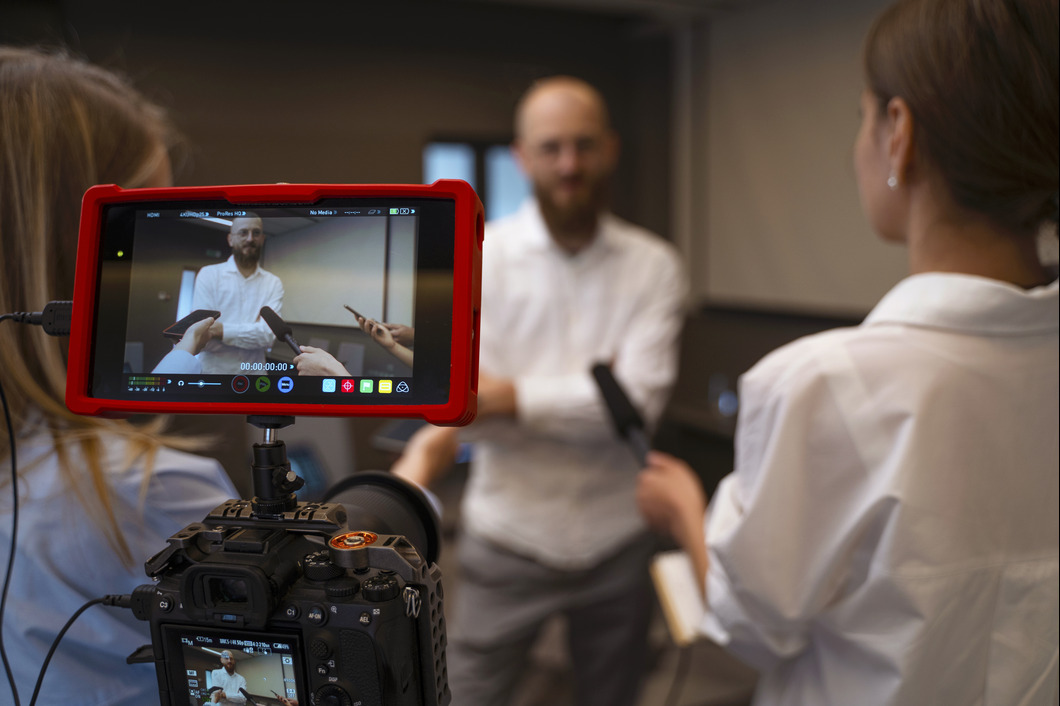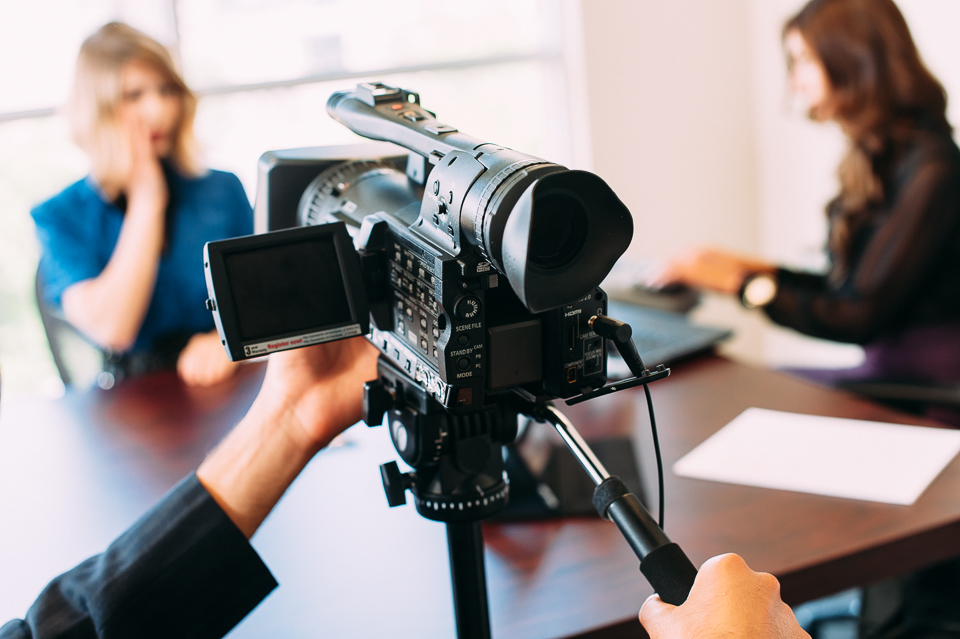Delving Into the Devices of Legal Videography: Unveiling Its Operation in Safeguarding Authentic Visual Statement for Judicial Process
In the realm of judicial proceedings, the function of lawful videography stands as a keystone in maintaining and presenting visual evidence. As modern technology proceeds to development, the mechanisms behind legal videography have ended up being increasingly intricate, using a vital layer of credibility to statements recorded on video clip. By delving right into the operational details of legal videography, one can reveal the thorough processes that secure the stability of aesthetic proof presented in courts - Legal Videography. This exploration not just clarifies the historical advancement of lawful videography however additionally hints at the future trends that might further change just how visual statements are promoted in the realm of justice.
Historic Advancement of Lawful Videography
Analyzing the historic progression of legal videography exposes a significant makeover in the capturing and presentation of visual evidence within the lawful landscape. In the past, lawful proceedings heavily relied on created photos and records to document occasions and give evidence. Nonetheless, with the advent of video modern technology, the legal market observed a standard shift in how visual testimony was caught and provided.
The advancement of legal videography can be traced back to the late 20th century when developments in video clip recording equipment made it extra obtainable for usage in court rooms. This technological advancement not only enhanced the precision and integrity of aesthetic evidence yet likewise revolutionized the way instances existed to courts and judges (Legal Videography). Attorneys began to recognize the influential power of video clip recordings in sharing feelings, subtleties, and non-verbal signs that composed photos or records alone might not record effectively

Innovation Developments in Video Documents
What vital technical developments have revolutionized video clip documents in the lawful area? The legal area has seen considerable innovations in video documents modern technology that have actually enhanced the authenticity and integrity of visual proof in judicial process.
Furthermore, improvements in video clip security and watermarking technologies have actually reinforced the safety and security and tamper-proof nature of video clip evidence, protecting it against unapproved alterations or tampering. Additionally, the arrival of cloud storage space options and remote access capabilities has structured the storage space, retrieval, and sharing of video proof, promoting seamless cooperation among lawyers and ensuring effective accessibility to important aesthetic statements when required. These technological developments in video clip paperwork have actually certainly changed the lawful area, boosting the accuracy, reputation, and admissibility of aesthetic evidence in judicial procedures.
Function of Legal Videographers in Court Room Settings
The development of video clip documents innovation in the lawful field has actually demanded an essential role for lawful videographers in courtroom settings, guaranteeing the honesty and integrity of visual statements presented throughout judicial proceedings. Lawful videographers play a fundamental duty in capturing and preserving precise aesthetic proof that can be critical in lawsuit. Their responsibility prolongs to establishing up tools, taping proceedings, and generating top notch videos that accurately reflect the occasions in the court.
In courtroom setups, legal videographers have to follow rigorous guidelines and requirements to preserve the authenticity of the visual record. They should possess a keen eye for information and a complete understanding of legal procedures to ensure that the video footage they catch is a real depiction of the events that transpired. Furthermore, lawful videographers frequently function carefully with lawful teams to make certain that the video clip proof aligns with the case's needs and can be efficiently presented in court to support the legal debates being made. Generally, the role of legal videographers in courtroom settings is essential in promoting the principles of justice and ensuring the openness of legal procedures.

Ensuring Admissibility and Honesty of Video Clip Proof
To maintain the credibility of aesthetic proof offered in lawful procedures, ensuring the admissibility and stability of video clip evidence is a vital obligation for lawful videographers. Admissibility describes the approval of evidence by the court, and for video evidence to be acceptable, it has to fulfill specific criteria. Legal videographers play an essential function in guaranteeing that the video clips they catch abide by the guidelines of evidence, such as dependability, authenticity, and importance.
Stability of video clip evidence includes maintaining the creativity and accuracy of the video from the time it is videotaped up until it is offered in court. This includes firmly keeping the video clip documents, recording the chain of protection, and avoiding any type of meddling or modifications. Lawful videographers must comply with strict methods to ensure the stability of the video clip proof and protect against any type of difficulties to its credibility.
Future Trends in Legal Videography
Provided the boosting reliance on modern technology in lawful proceedings, legal videographers are positioned to embrace ingenious improvements shaping the future of aesthetic statement capture and presentation. Among the noticeable fads on the horizon is the integration of digital fact (VIRTUAL REALITY) and augmented fact (AR) technologies into lawful videography. These modern technologies have the possible to official site transform just how aesthetic evidence is presented in courtrooms, enabling courts and courts to immerse themselves in the scene of the crime or incident.
Additionally, making use of fabricated Going Here intelligence (AI) algorithms for video clip evaluation is anticipated to enhance the procedure of assessing and examining huge amounts of video clip footage. AI can aid in recognizing essential minutes, anomalies, and patterns within video clips, enhancing the performance of lawful investigations.

Conclusion
Finally, lawful videography has actually played a critical role in providing authentic visual proof for judicial proceedings. Through technological innovations and the expertise of lawful videographers, the honesty and admissibility of video proof are made sure in court room setups. As legal videography remains to develop, it will certainly be necessary to support requirements that preserve the precision and dependability of aesthetic testimony for the future of legal proceedings.
Examining the historical development of lawful videography exposes a significant transformation in the catching and discussion of aesthetic proof within the legal landscape.The development of video documentation modern technology in the lawful field has actually demanded an essential function for lawful videographers in court settings, guaranteeing the honesty and reliability of visual testimonies presented throughout judicial proceedings. In addition, legal videographers usually work carefully with legal groups to make certain that the video proof aligns with the situation's requirements and can be effectively offered in court to sustain the legal debates being made.To keep the reliability of aesthetic proof provided in lawful proceedings, making certain the admissibility and stability of video clip proof is a crucial obligation for lawful videographers. As lawful videography a fantastic read proceeds to develop, it will be vital to maintain criteria that maintain the precision and integrity of visual testimony for the future of lawful process.
Comments on “How Legal Videography Can Make or Break Your Legal Method”